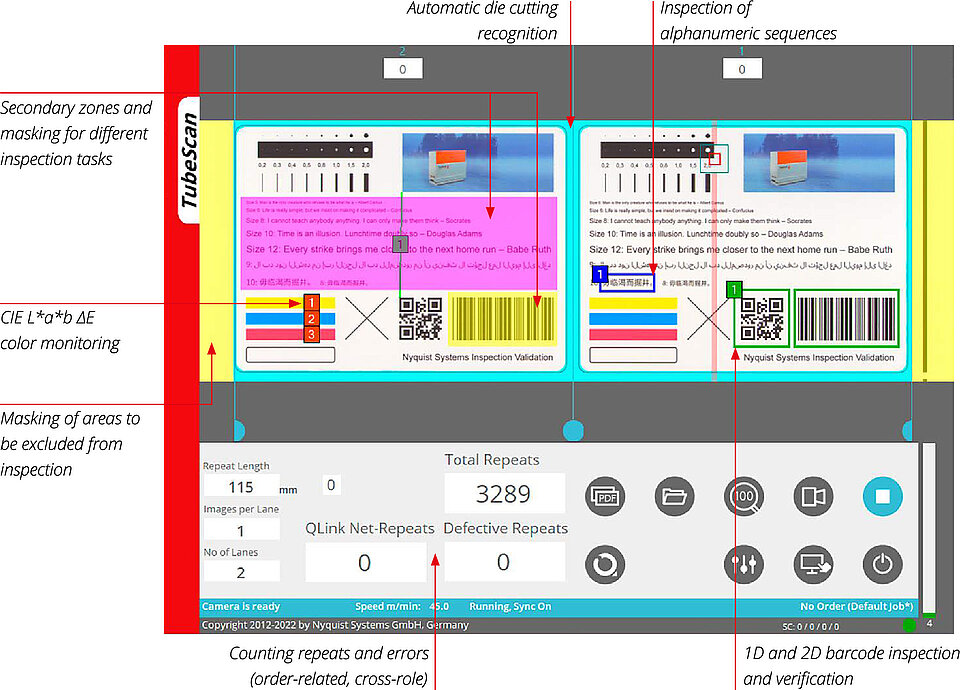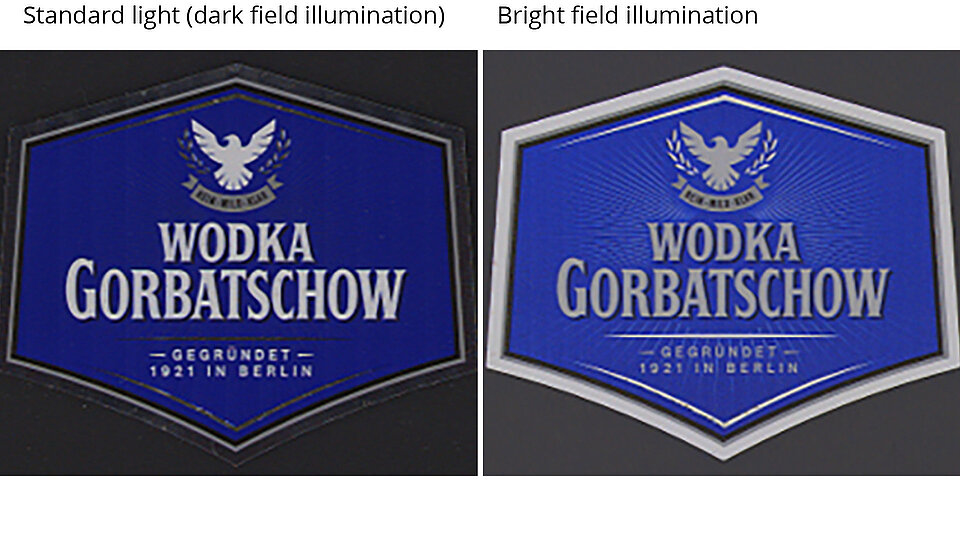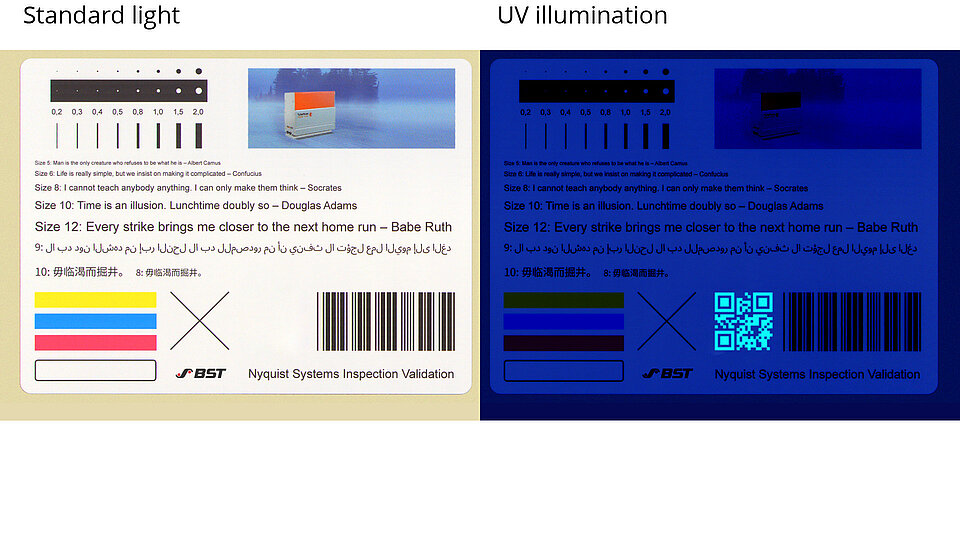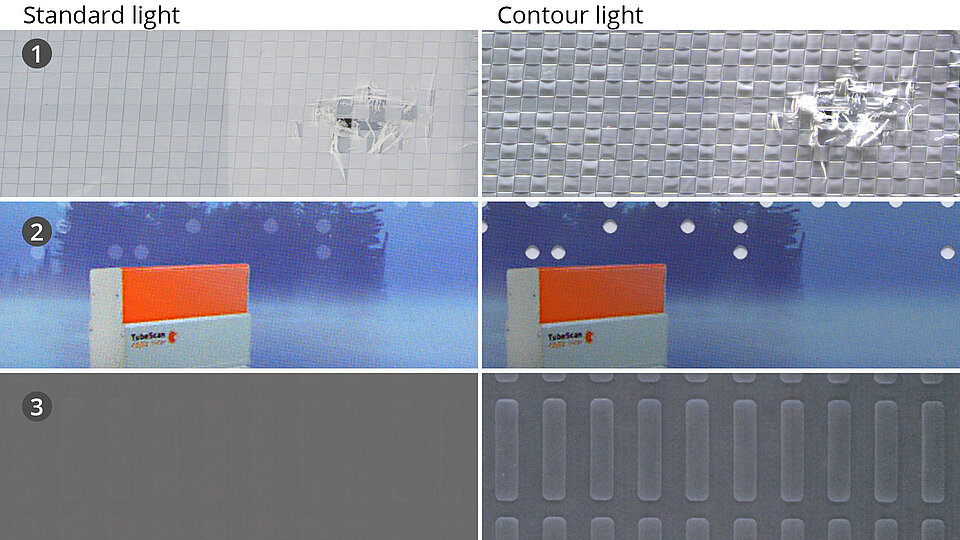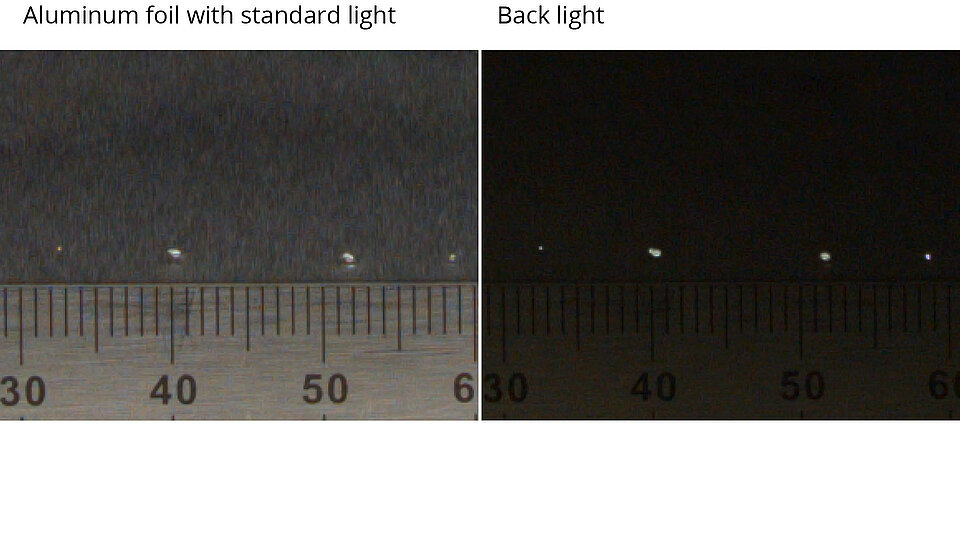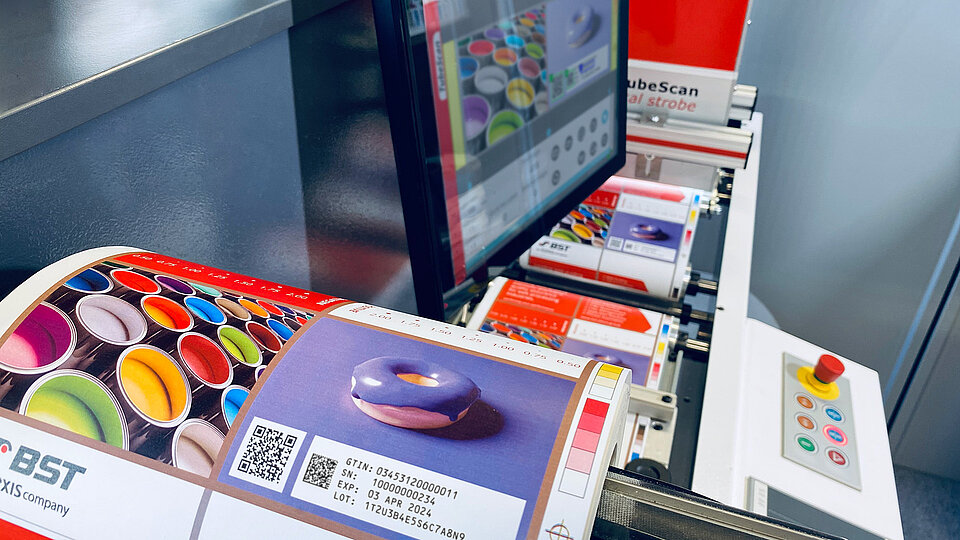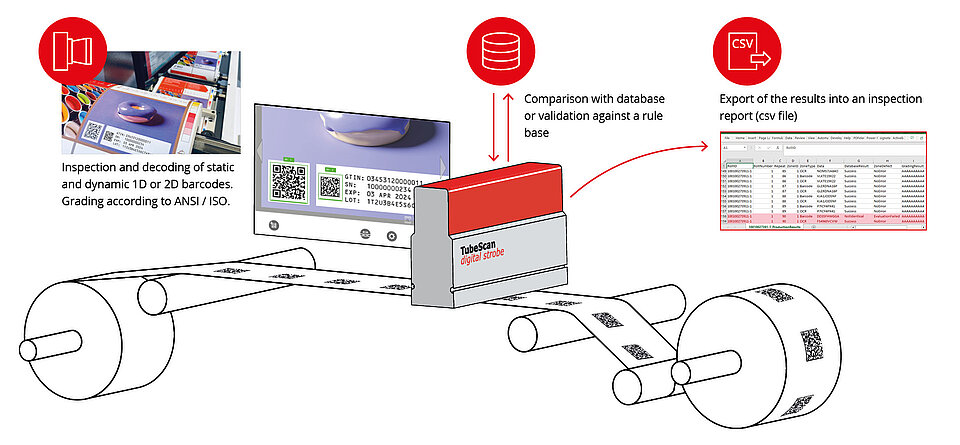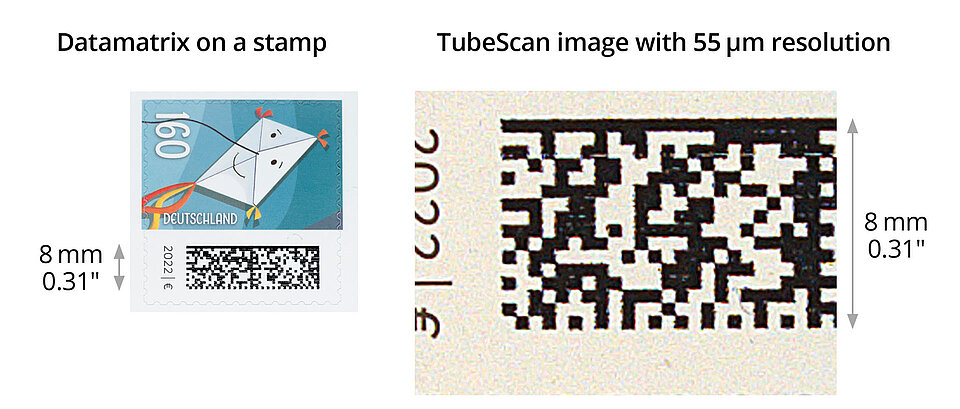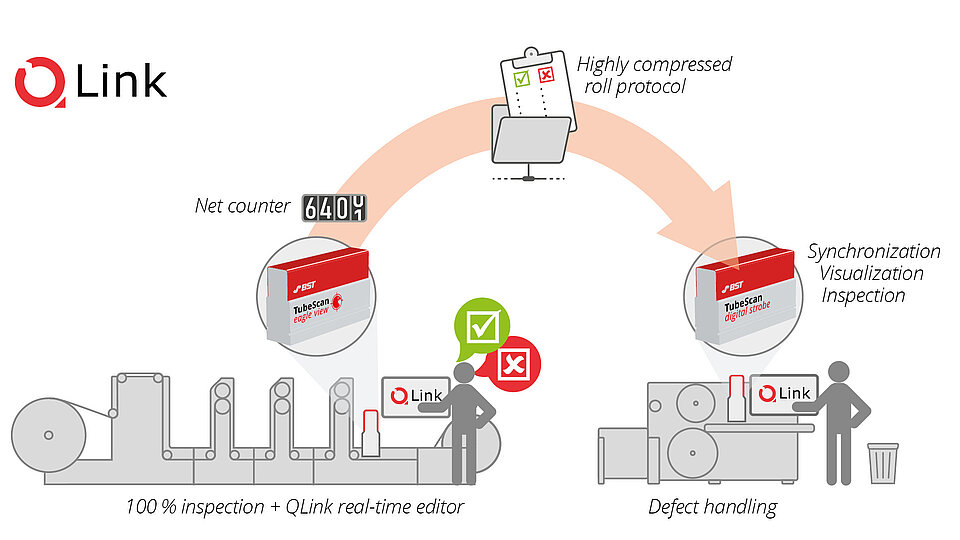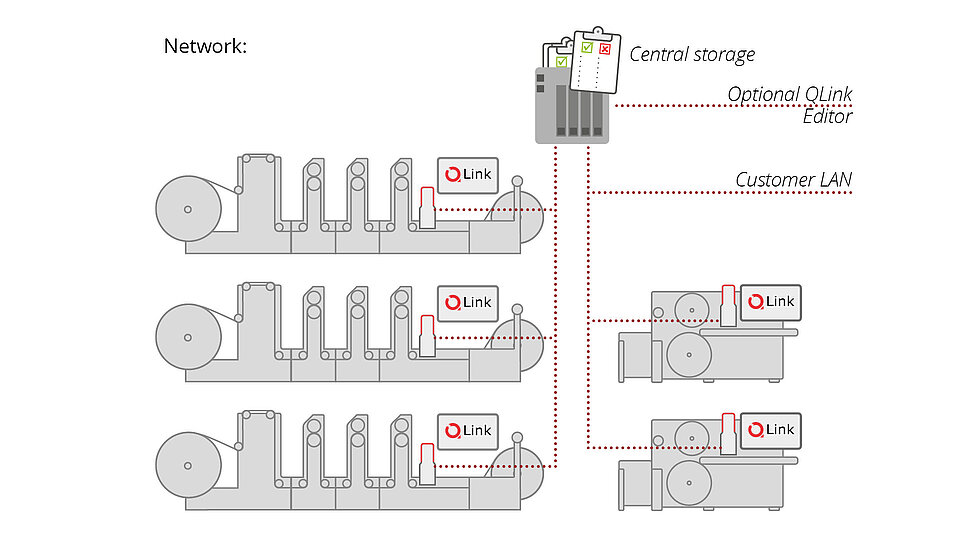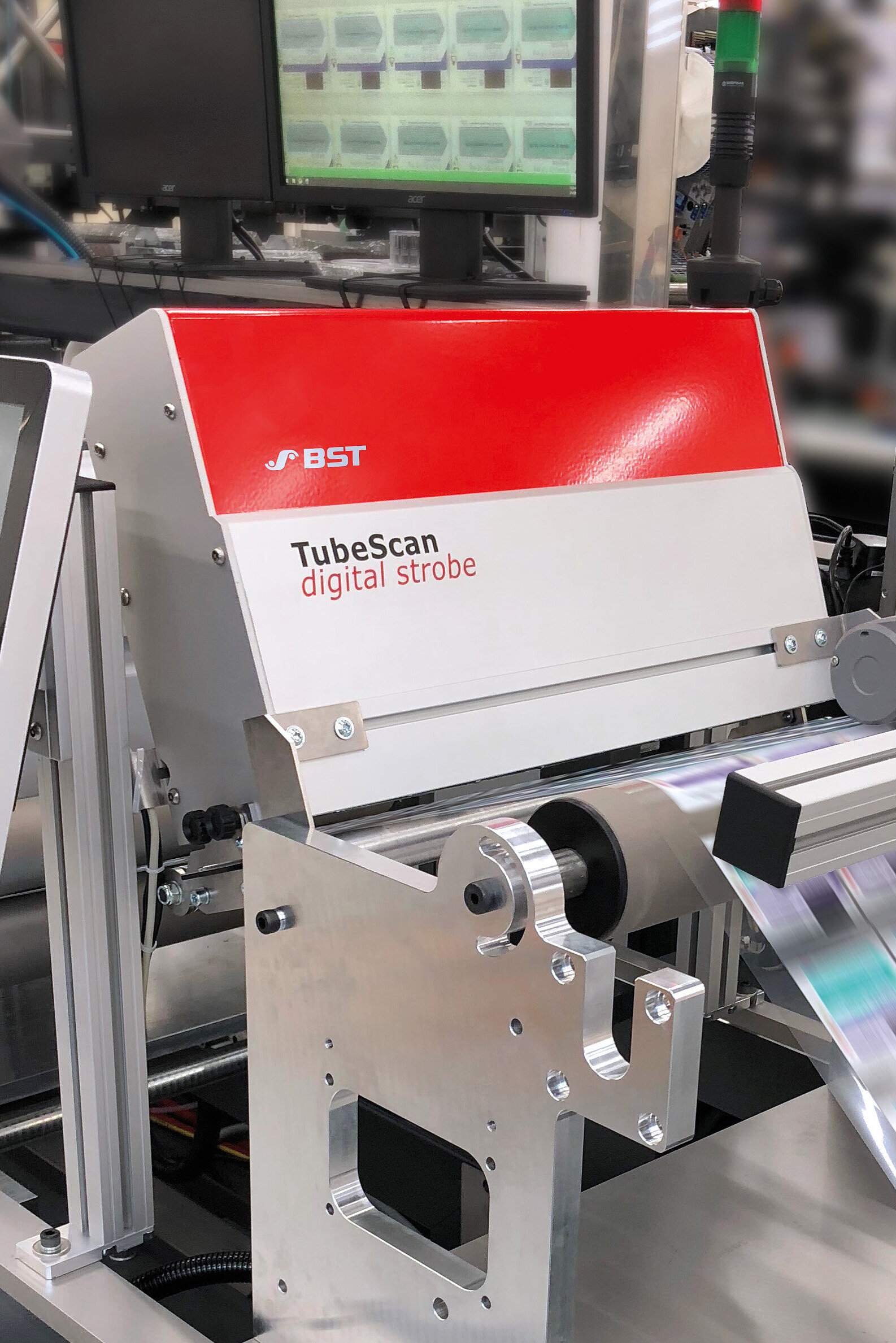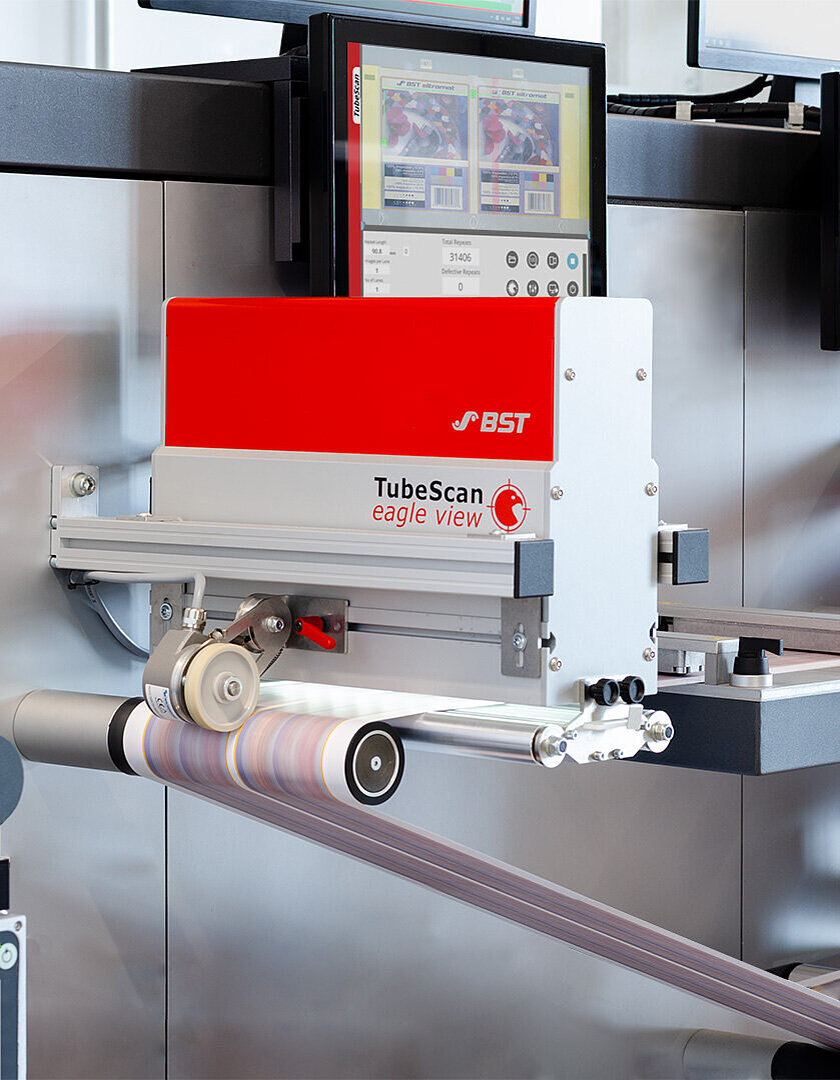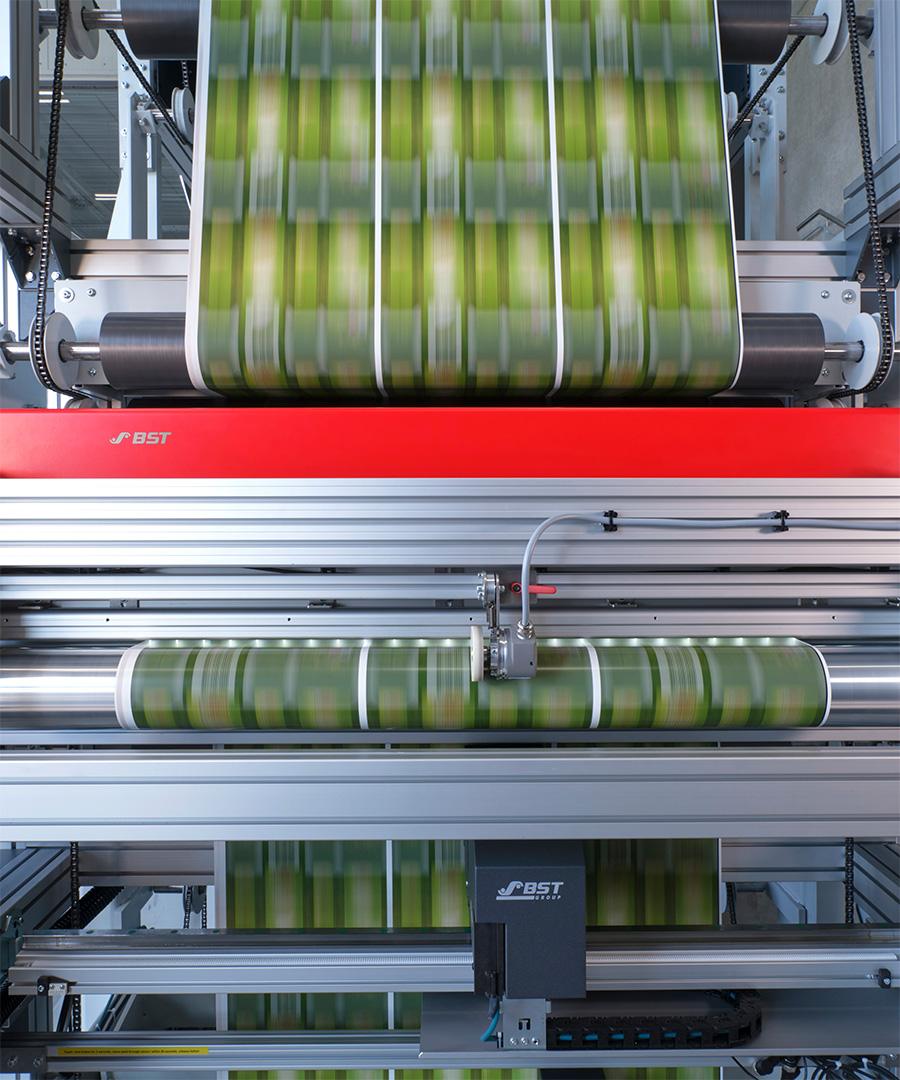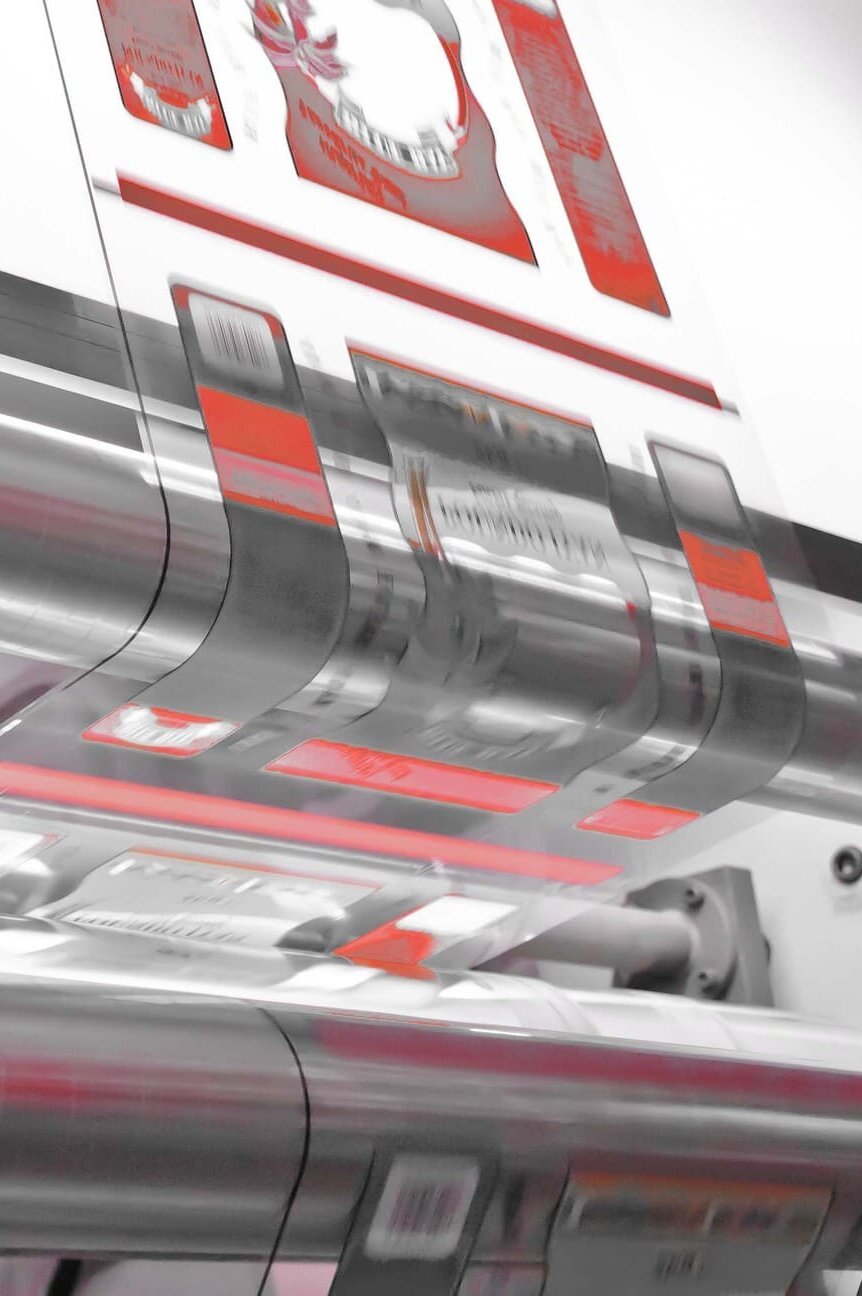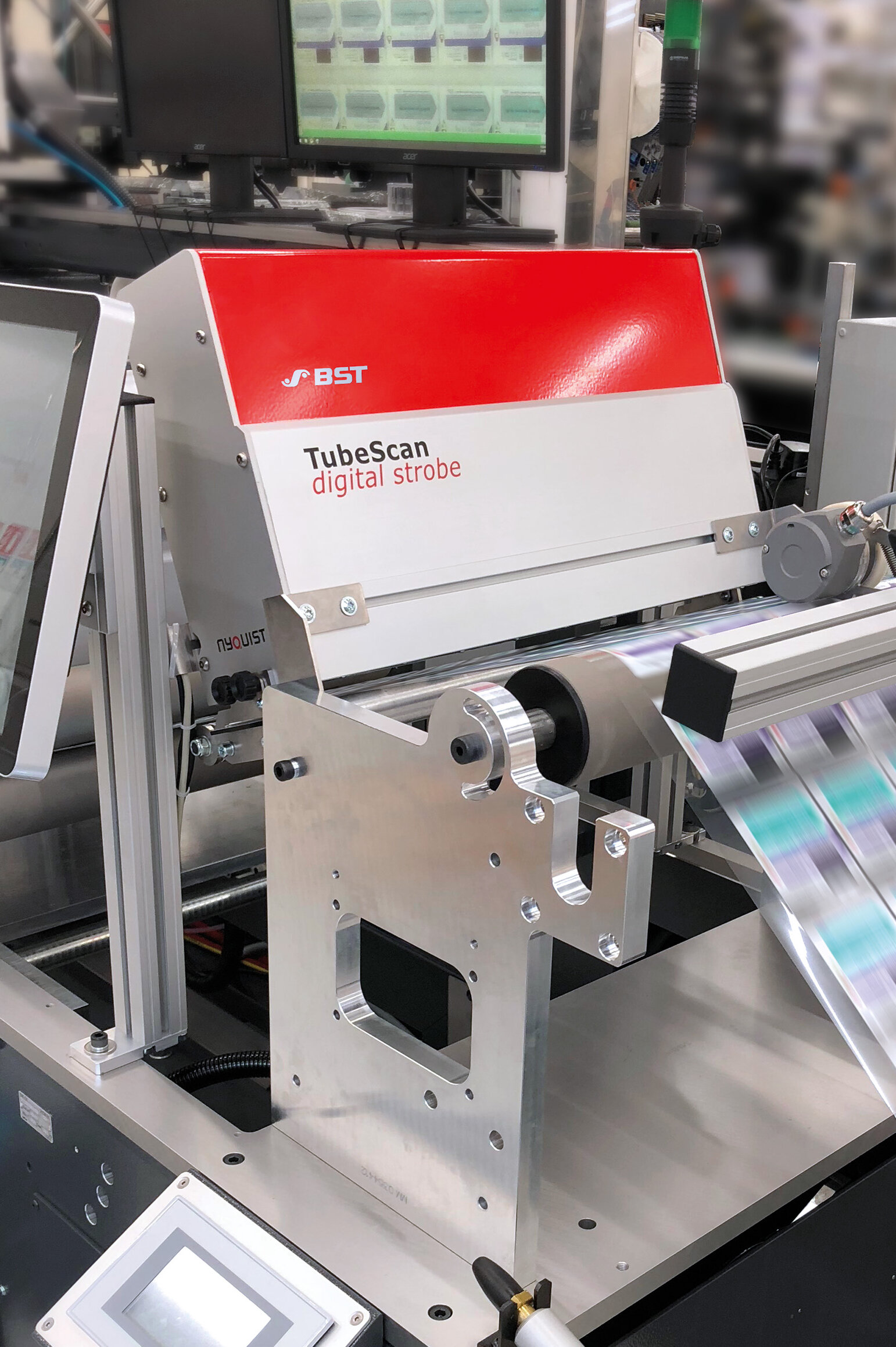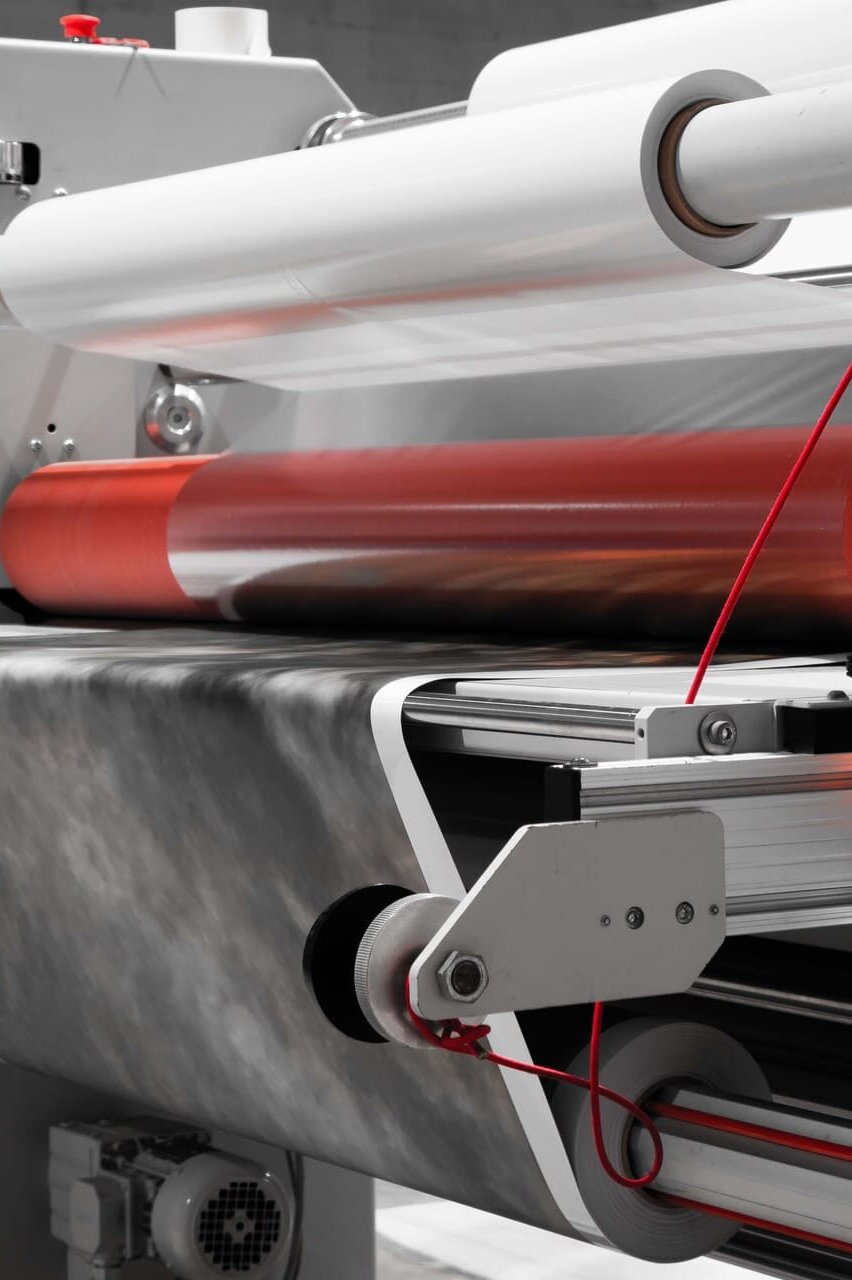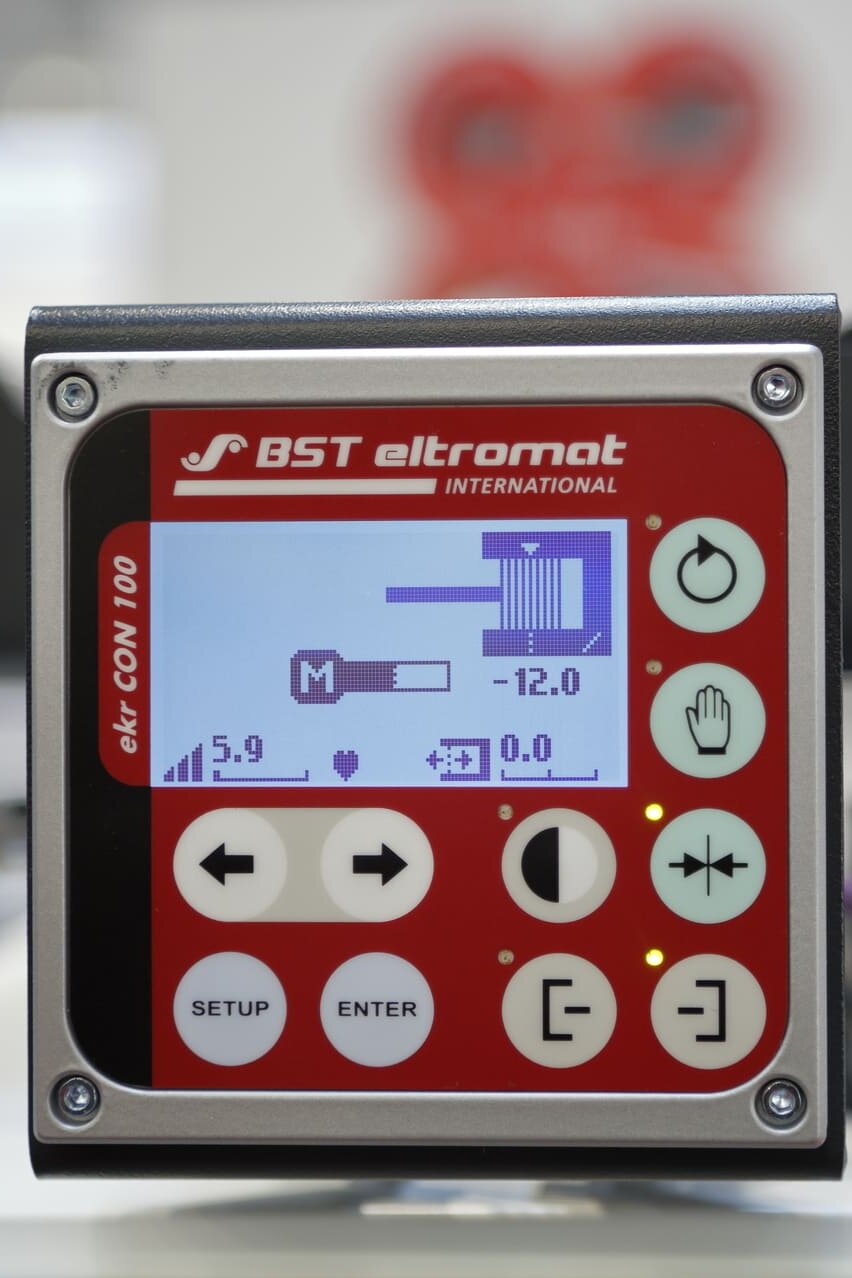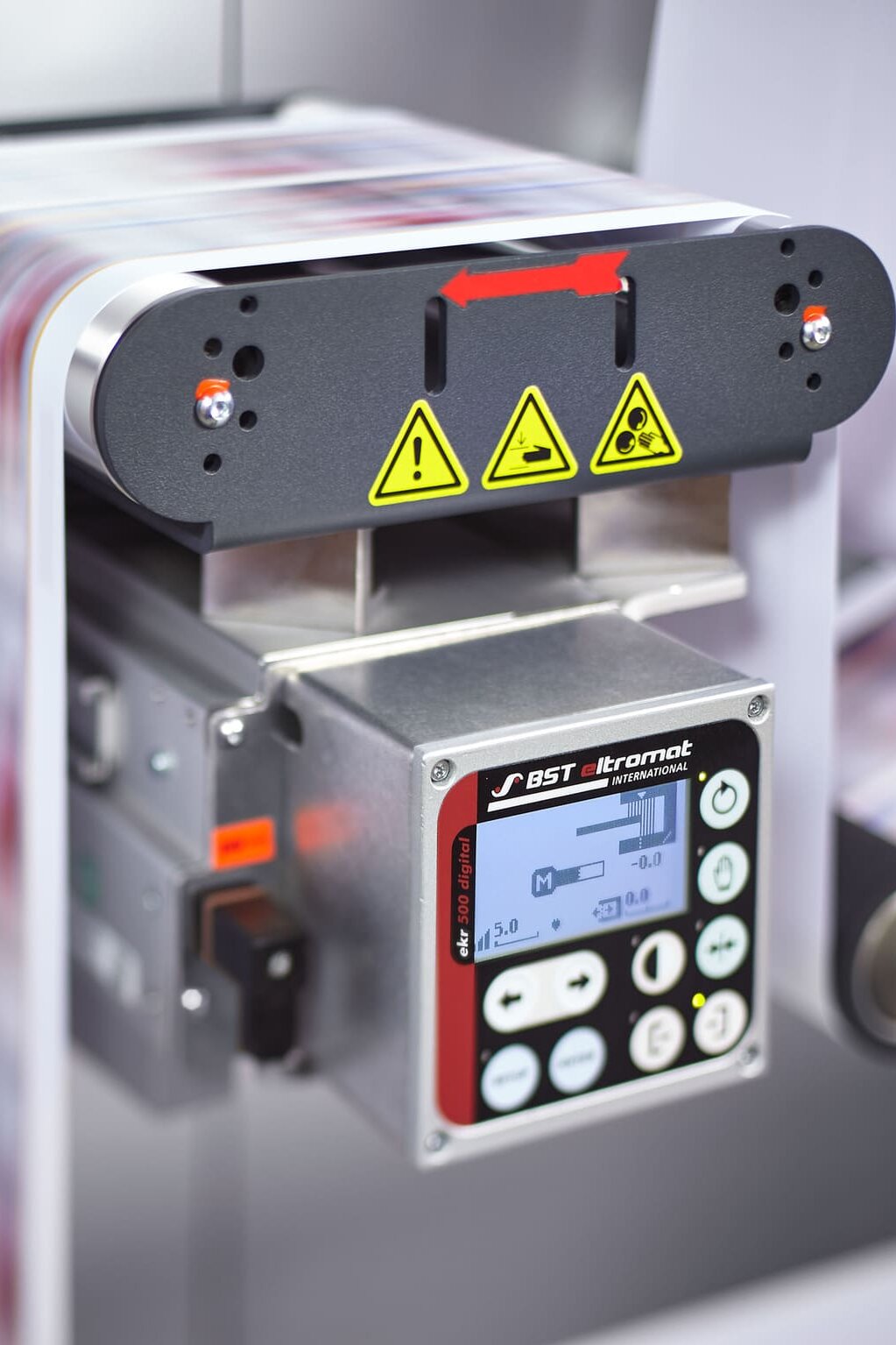TubeScan product series
For 100% print quality, monitoring, web inspection systems are not suitable and must be combined with print inspection systems. The TubeScan product family (TubeScan digital strobe, TubeScan digital strobe XL, TubeScan eagle view) is your ideal and cost-efficient entry into 100% print inspection – especially in combination with the inspection workflow QLink, consisting of QLinkPress, QLinkEditor, QLinkRewinder and QLinkViewer.
Details can be found in the product brochure "TubeScan 100% Print Inspection".
All TubeScan models offer the following - partly optional - features:
Overview of features
- Small footprint, only requires 125 mm (5") in web direction, 300 mm (12") in height
- Can take and display up to 30 images per second in live mode – seamless monitoring of every repeat in real time
- Crisp display of image due to high camera resolutions
- Display of detected errors in real time on the HD monitor, during setup and production
- No health risk, less tiring compared to conventional monitoring using strobe lights
- Pulsed LED illumination for extremely low power consumption, especially for diffuse, translucent, reflective and luminescent (UV) materials
- UV illumination for checking UV-active applications, such as varnishes, adhesives, silicones or other luminescent coatings
- Image stabilization without print mark sensor due to automatic format synchronization over the entire speed range of the machine
- Accurate length and repeat counting
- Secondary zones and masking for different inspection tasks
- Relative distance monitoring based on edges or shapes
- Adjustable sensitivities for different defect classes
- Delta-E Monitoring
- Inspection, validation and database comparison of variable data (barcodes, alphanumerical sequences, OCR). See brochure
- PDF validation
- Surface inspection
- Generation of PDF roll reports
- Dynamic roll map for the visualization of all defects in the current production roll
- Interfaces to prepress / ERP systems (customer-specific or standardized such as Hybrid and CERM)
- PDF Toolbox
a) for master image comparison
b) import of inspection zones defined in pre-press, such as masking, die-cutting contours, secondary inspection zones, static or variable 1D / 2D barcodes and alphanumeric sequences" - QLink workflow for data exchange between inspection systems across the entire production chain
- Up to 10 opto-isolated output signals (24 V)
Not every material can be checked well with standard white light. You need the right illumination for special surfaces, such as foil embossing or for luminescent applications such as paint, adhesive or silicone applications. Due to the pulsed operation, the power consumption is minimal.
Bright field illumination for highly reflective materials
To generate maximum contrast when inspecting highly reflective materials, such as the broad outline of silver foil finishing in this example, use bright field illumination.
Left picture: Camera image with standard light (“dark field illumination”).
Right picture: With bright field illumination, the foil finishing is clearly visible.
Typical applications:
- Cold foil / hot foil applications
- Holograms
- Coatings
UV illumination for luminescent applications
Inspect luminescent areas such as coatings, adhesives and silicones, as well as security features printed with transparent luminescent ink.
Left picture: With standard Illumination, the QR code printed with transparent luminescent ink is invisible.
Right picture: The UV lighting makes the QR code clearly visible for inspection.
Typical applications:
- Security print
- Pharma
Contour light for recognition of elevations
You can switch to contour light to make the finest elevations visible for the inspection camera. Refer to the three examples on the left:
1: Detection of irregularities on surfaces
2: Inspection of braille writing
3: Detection of almost invisible missing labels and matrix residues, particularly on blank labels
Typical applications:
- Clear-on-clear, clear-on-paper (without print)
- Sleeves / tubes
- Braille
- Irregularities on surfaces
Inspection of variable barcodes and alphanumeric sequences
Variable linear or matrix barcodes can make goods counterfeit-resistant, traceable and secure. But, how do you ensure that the series is complete and correct, that no duplicates were printed, or that all codes are readable by a barcode scanner?
TubeScan allows you to check, decode and evaluate 1D or 2D barcodes and alphanumeric sequences inline – at regular machine speed and with simultaneous print inspection.
Inspection of ...
a) Quality:
Readability / decodability
Barcode- / matrix code print quality (verification,
ANSI-Grading)
b) Content:
Decode results, read out, export to list
Check for sequence and duplicates
Real-time comparison with code database
Dynamic verification of variable objects
Numbers / text (OCR)
Barcodes (1D barcodes): State, Codabar, Code 39, Code 93, Code 128, EAN 8, EAN 13, EAN 14
2D matrix codes: Aztec, Data Matrix, Maxicode, QR code, Micro QR code, PDF417, MicroPDF417, Truncated PDF417
Further processing / workflow
Barcode errors are in the inspection report and can be placed on the rewinder.
Workflow of variable data inspection
The TubeScan camera inspects your printed variable data, compares it to a database, and exports the results in real time at full production speed into an inspection report. This way, you can ensure that all your variable codes are complete, correct and readable. This can be barcodes or sequences of numbers or letters using OCR (optical character recognition).
Using TubeScan in the production workflow increases efficiency and reduces waste. Defects can be classified and marked even while printing. Overproduction is no longer necessary because the product quantity is precisely recorded.
Defects are then placed and removed on the converting machine. The camera, rather than commonly used sensors, is used to synchronize the defect protocol and the printed material. This results in a very fast set-up and reliable and precise defect placement.
QLink Press – on the printing press
Software module with local mass storage – based on TubeScan digital strobe or TubeScan eagle view.
Real-time editor
- Editing of the roll protocol database during printing
- Display of the net count in real-time, taking into account the edited roll protocol – per roll or cumulated over the entire production
Roll management
- Selection, editing and transfer of the roll protocols within the network
Local mass storage
- Temporary, local data storage of the roll protocols
QLink Rewinder – on the rewinder
Software module, based on TubeScan digital strobe or TubeScan eagle view
- Processing of all roll protocols in the network
- Camera-based synchronization and visualization ensures best workflow stability
- Control of the rewinder
- It is no longer necessary to spend time and money positioning and adjusting ultrasonic or contrast sensors
- Possibility of skipping future non-relevant defects, which are shown in the rollmap
If there is no roll protocol from the printing press, you can use the TubeScan on the rewinder for missing label detection or even 100 % print inspection – depending on your license package.
The TubeScan on the rewinder substitutes tiring strobe lights, commonly used for web monitoring.
QLink Editor – on the PC
The software module QLink Editor is installed on a separate PC. It can be included in the order or supplied by the customer.
- Processing of all roll protocols in the network
- Roll protocols can be visualized and edited for further converting
Overview of your benefits
QLink workflow is significantly less expensive than previous inspection workflow systems.
... on the printing press
The QLink Real-Time Editor allows defect evaluation right at the press. The press operator classifies errors as „irrelevant“ or „to be corrected” in subsequent finishing process. Larger defect areas, such as missing ink, can be defined as waste zones. These can then be removed on the rewinder in one single step.
The net count is automatically updated after each editing. No more costly over-production just to ensure there is enough good material.
Through innovative compression, the file size of the protocols is as low as 10% of the usual roll protocols (JPEG / BMP). This saves disk space and expenses,
and it will speed up your data transfer.
... on the rewinder
The camera-based synchronization is easy to set up and very reliable in contrast to the sensor-based systems that are commonly used.
Have we caught your interest? Get in touch!
"The 100% inspection system TubeScan digital strobe can be installed on all common printing presses and finishing machines. With over 2000 installations worldwide, it covers all requirements for inspection in label and packaging printing. Reflective surfaces, embossed structures, security features, clear-on-clear, barcodes, variable print data, etc. are some special applications in which the TubeScan clearly shows its advantages."
Dr. Stephan Krebs, Product Manager & Inventor
